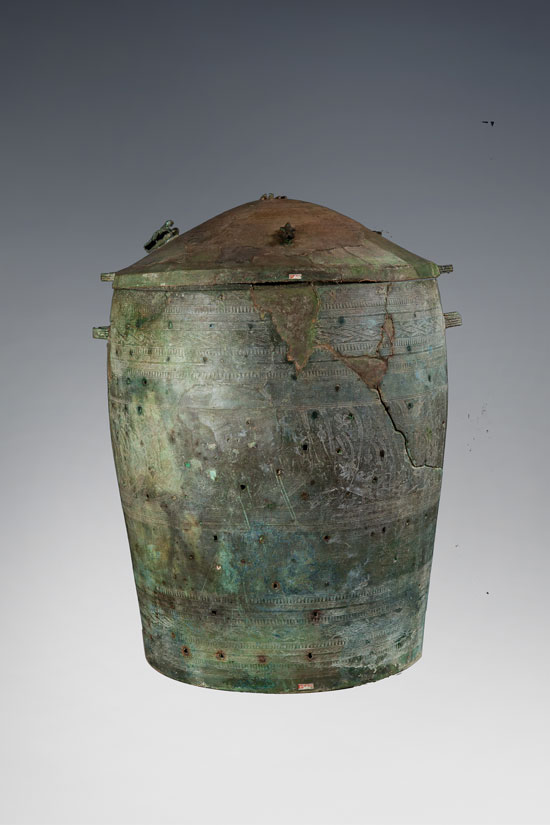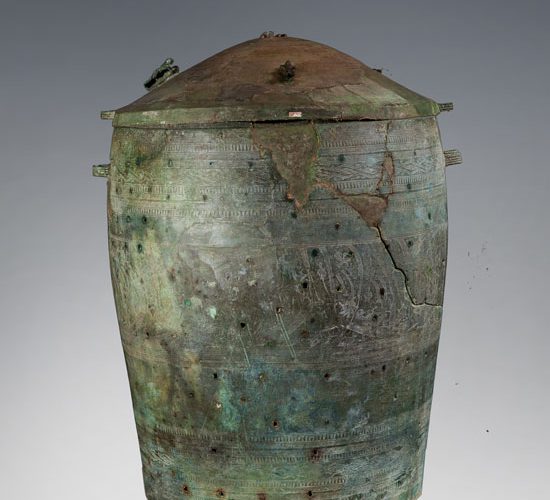(No.5, Vol.6,Jul-Aug 2016 Vietnam Heritage Magazine)
The Vietnam National Museum of History is currently holding a vast collection of over 200,000 precious items, rich in material and cultural diversity, vividly displaying the life of humans from prehistoric times. Many are one of a kind, historically representative and invaluable.
Based on the National treasure classification criteria, the Museum has proposed a list for the Antique Assessing Committee of the Ministry of Culture, Sport and Tourism and the National Cultural Heritage Committee to assess and to present to the Minister of Culture, Sport and Tourism. Consequently, the Prime Minister had signed Decisions to recognize 16 National Treasures. The Museum is documenting other relics that meet the criteria to submit to the Committees.
Vietnam National Museum of History
1 Trang Tien St, Hanoi
216 Tran Quang Khai St, Hanoi
Tel: (04) 3824-1384
www.baotanglichsu.vn
8 a.m. to noon and 1.30 p.m. to 5 p.m.
Every day except Monday of the first week of each month.

Dao Thinh Bronze Jar of the Dong Son Culture, 2500 – 2000 years old

Hoang Ha Bronze Drum of the Dong Son Culture, 2500 – 2000 years old

Ngoc Lu Bronze Drum of the Dong Son Culture, 2500 – 2000 years old

Ceramic Vase with blue flowers and swans, early Le Dynasty, 15-16th centuries

Bronze lamp in the shape of a kneeling person, 2000 – 1700 years old

Bronze statue of one person carrying
another and blowing bamboo pipes,
Dong Son Culture, 2500 – 2000 years old

‘Decreeing Power Seal’ from the 8th Minh Menh year (1827)

Mon Ha Sanh Bronze Seal from 1377 of King Tran Due Tong

Canh Thinh Bronze Drum of Tay Son Dynasty, 1800

Van Ban Bronze Bell from the 13-14th centuries

Viet Khe Wooden Grave, 2500 – 2000 years ago

Stone Stele from Nam Giao Temple of Thang Long citadel (Hanoi), erected in the 4th Vinh Tri year of King Le Hy Tong (1679)

Vo Canh stone stele from Vo Canh, Vinh Trung, Nha Trang, Khanh Hoa Province, 3-4th centuries AD. This one of the oldest steles of South-East Asia, showing the influence and expansion of Sanscrit and Buddhism into ancient Champa Kingdom and South-East Asia

‘The Revolution’s Way’ book by Nguyen Ai Quoc (later Chairman Ho Chi Minh), published in Guangzhou (China), 1927

Autographed copy of the ‘Call for nationwide resistance’ by Chairman Ho Chi Minh on Dec 19, 1946.

The work, ‘Prisoner’s Diary’ by
Chairman Ho Chi Minh, 1942-1943

